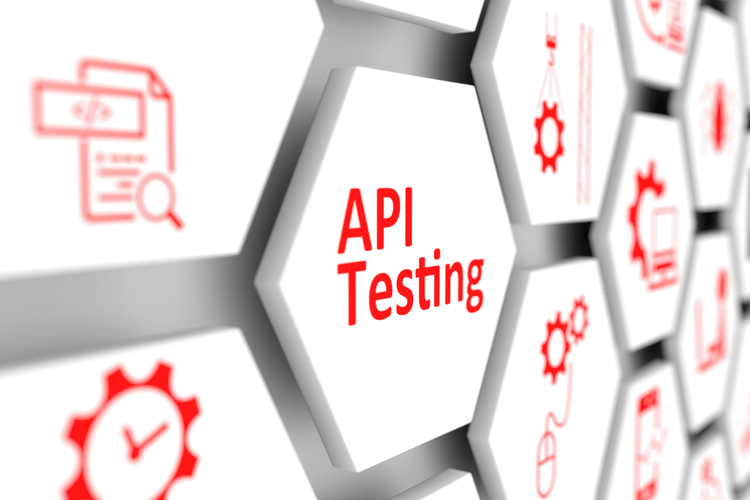What is Natural Language Understanding NLU?
« To have a meaningful conversation with machines is only possible when we match every word to the correct meaning based on the meanings of the other words in the sentence – just like a 3-year-old does without guesswork. » With further technological advancements and ever-evolving approaches to natural language processing, there’s no doubt these machines will become more efficient and accurate. Meanwhile, concerns around generative AI such as misinformation, model transparency and misuse are warranted. One thing’s for certain, keeping humans in the loop for both the training and testing stages of building these models, is essential. One of the most commonly used neural network-based language models is a recurrent neural network (RNN).

We’ve already analysed tens of thousands of financial research papers and identified more than 700 attractive trading systems together with hundreds of related academic papers. Based on BERT, RoBERTa optimizes the training process and achieves better results with fewer training steps. Power your NLP algorithms using our accurately annotated AI training data.
Title:Knowledge Prompting in Pre-trained Language Model for Natural Language Understanding
Like DistilBERT, these models are distilled versions of GPT-2 and GPT-3, offering a balance between efficiency and performance. T5 frames all NLP tasks as text-to-text problems, making it more straightforward and efficient for different tasks. ALBERT introduces parameter-reduction techniques to reduce the model’s size while maintaining its performance. Extractive reading comprehension systems can often locate the correct nlu models answer to a question in a context document, but they also tend to make unreliable guesses on questions for which the correct answer is not stated in the context. 3 BLEU on WMT’16 German-English, improving the previous state of the art by more than 9 BLEU. These provided computers with collections of handcrafted rules, enabling them to carry out NLP tasks by applying those rules to any data they came across.
Large Language Models are capable of in-context learning—without the need for an explicit fine-tuning step. You can leverage their ability to learn from analogy by providing input; sample output examples of the task. Wrote the manuscript with feedback and contributions from all authors, in particular from E.G. and B.K. For example, an NLU might be trained on billions of English phrases ranging from the weather to cooking recipes and everything in between.
The Next Frontier of Search: Retrieval Augmented Generation meets Reciprocal Rank Fusion and Generated Queries
There are two main ways to do this, cloud-based training and local training. Any token not appearing in its vocabulary is replaced by [UNK] for « unknown ».
Understand the relationship between two entities within your content and identify the type of relation. Analyze the sentiment (positive, negative, or neutral) towards specific target phrases and of the document as a whole. Categorize your data with granularity using a five-level classification hierarchy. Train Watson to understand the language of your business and extract customized insights with Watson Knowledge Studio. Similar NLU capabilities are part of the IBM Watson NLP Library for Embed®, a containerized library for IBM partners to integrate in their commercial applications. Natural Language Understanding is a best-of-breed text analytics service that can be integrated into an existing data pipeline that supports 13 languages depending on the feature.
BERT (language model)
Indeed, augmenting language models with human scanpaths has proven beneficial for a range of NLP tasks, including language understanding. However, the applicability of this approach is hampered because the abundance of text corpora is contrasted by a scarcity of gaze data. Although models for the generation of human-like scanpaths during reading have been developed, the potential of synthetic gaze data across NLP tasks remains largely unexplored.
Unlocking the power of Natural Language Processing in FinTech – FinTech Global
Unlocking the power of Natural Language Processing in FinTech.
Posted: Mon, 23 Oct 2023 14:29:52 GMT [source]
Researchers or developers have experimented with the concept of distillation to create more efficient versions of GPT-3. However, please note that the availability and specifics of such models may vary, and it’s always best to refer to the latest research and official sources for the most up-to-date information on language models. Distillation refers to a process where a large and complex language model (like GPT-3) is used to train a smaller and more efficient version of the same model.
Hewlett Packard Enterprise Data Science Institute
These models are created to be more efficient and faster while still maintaining useful language understanding capabilities. TELUS International provides services to implementers of generative AI technologies, with extensive capabilities for application development through the consultancy, design, build, deployment and maintenance phases. We have nearly two decades of AI experience in natural language processing, and our global community can review, translate, annotate and curate data in 500+ languages and dialects. One of the first NLP research endeavors, the Georgetown-IBM experiment, conducted in 1954, used machines to successfully translate 60 Russian sentences into English. While the task could be considered relatively simple by today’s standards, this experiment, and others like it, showed the incredible potential of natural language processing as a field. GPT-1 uses a 12-layer decoder-only transformer framework with masked self-attention for training the language model.

We’ve wrapped up our discussion with building and deploying LLM applications requiring careful planning, user-focused design, robust infrastructure, while prioritizing data privacy and ethics. So fine-tuning the weights in all the layers is a resource-intensive task. Recently, Parameter-Efficient Fine-Tuning Techniques (PEFT) like LoRA and QLoRA have become popular. With QLoRA you can fine-tune a 4-bit quantized LLM—on a single consumer GPU—without any drop in performance. In light of this, generative pre-training of a language model on a diverse corpus of unlabeled text, followed by discriminative fine-tuning on each specific downstream task was proposed which resulted in large gains.
GLUE: A Multi-Task Benchmark and Analysis Platform for Natural Language Understanding
ELECTRA (Efficiently Learning an Encoder that Classifies Token Replacements Accurately) is a novel language model proposed by researchers at Google Research. Unlike traditional masked language models like BERT, ELECTRA introduces a more efficient pretraining process. In ELECTRA, a portion of the input tokens is replaced with plausible alternatives generated by another neural network called the “discriminator.” The main encoder network is then trained to predict whether each token was replaced or not. This process helps the model learn more efficiently as it focuses on discriminating between genuine and replaced tokens. After pre-training LLMs on massive text corpora, the next step is to fine-tune them for specific natural language processing tasks.
- T5 (Text-to-Text Transfer Transformer) is a state-of-the-art language model introduced by Google Research.
- RoBERTa (A Robustly Optimized BERT Pretraining Approach) is an advanced language model introduced by Facebook AI.
- The GPT model’s architecture largely remained the same as it was in the original work on transformers.
- The output of an NLU is usually more comprehensive, providing a confidence score for the matched intent.
- Distillation refers to a process where a large and complex language model (like GPT-3) is used to train a smaller and more efficient version of the same model.
Now that you know what LLMs are, let’s move on to learning the transformer architecture that underpins these powerful LLMs. So in this step of your LLM journey, Transformers need all your attention (no pun intended). All of this information forms a training dataset, which you would fine-tune your model using. Each NLU following the intent-utterance model uses slightly different terminology and format of this dataset but follows the same principles. There are many NLUs on the market, ranging from very task-specific to very general.
Pretraining
ATNs and their more general format called « generalized ATNs » continued to be used for a number of years. Now that you’re familiar with the fundamentals of Large Language Models (LLMs) and the transformer architecture, you can proceed to learn about pre-training LLMs. Pre-training forms the foundation of LLMs by exposing them to a massive corpus of text data, enabling them to understand the aspects and nuances of the language. If you’ve ever wondered what LLMs really are, how they work, and what you can build with them, this guide is for you.
